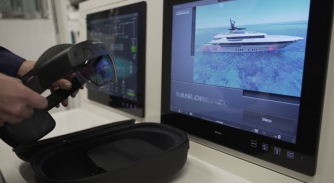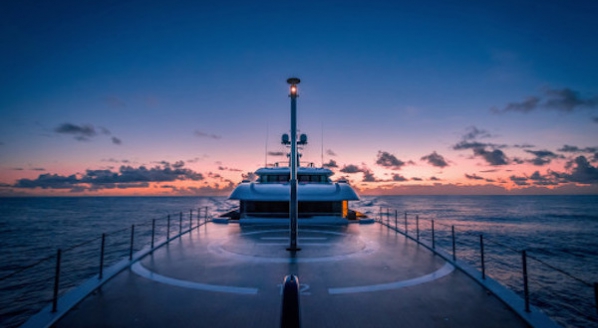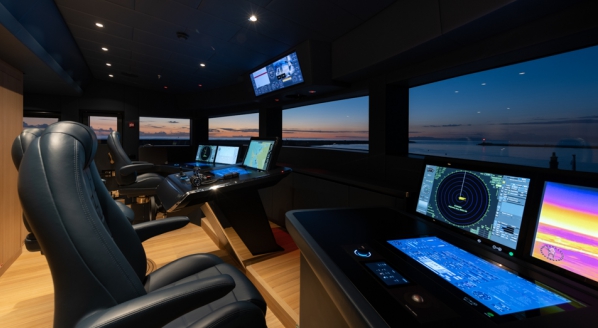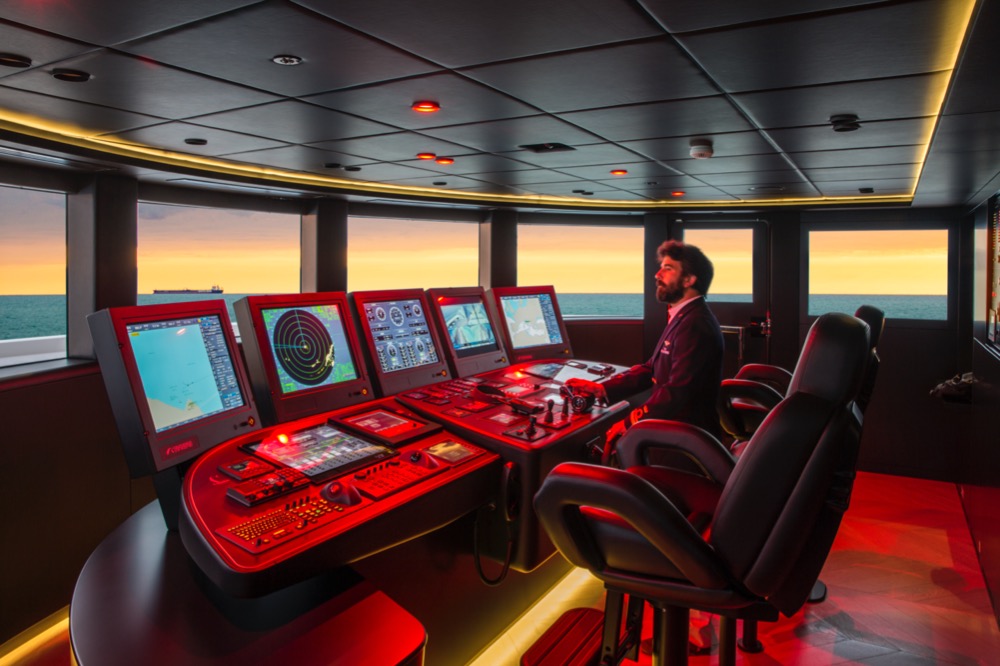The evolving issue of bridge complexity
TEAM Italia discusses how bridge integrators ensure configurations remain safe and user-friendly…
The bridge of a vessel has historically been modular in design, with a focus on the functional rather than the aesthetic; a collection of standalone controls and equipment, each with the capability to be manually and individually operated. However, with increasing guest interaction taking place in the bridge of a superyacht – due to its naturally advantageous views and constant buzz of activity – this space has evolved to become an extension of the owner and guest areas, resulting in a drive towards futuristic bridge design and integration, something that has not happened on commercial shipping vessels to the same extent.
But has this shift towards aesthetics and enhancing the guest experience overshadowed the key functions of the bridge – that of safe pilotage and navigation? This question was raised recently when, in February, footage emerged of the 77m M/Y Go colliding with a dock in Simpson Bay, St Maarten at a slow speed while attempting to manoeuvre out of the notoriously tight exit through the Simpson Bay Bridge. While the findings of the ongoing investigations into the incident have not yet been publicly released, the captain was reported as criticising modern electronics as “ridiculously over the top”, with no manual overrides or back-ups if something went wrong.
But what do those who design and oversee superyacht bridge systems and safe bridge operations think about this sentiment? “We don’t know which system is installed on board and, in particular, what the system architecture is,” says TEAM Italia CEO Massimo Minnella. “But I honestly believe that an electronic integrated bridge can only put you in a dangerous spot if there is no Plan B if something goes wrong on the technology side. From the first moment we started working on integrated bridge projects more than 20 years ago, we have always considered safety as not a compromise, but a priority. Our motto is ‘safety first’.
“A system architecture based on the concept of multi-level redundancy, with the implementation of CPU master/slave and, in addition, the use of watchdog technology and fail-safe techniques, means greater complexity, and therefore costs. But in the engineering of our new projects, the cornerstone is always safety. Integration at advanced levels has to take these principles into consideration in the engineering phases of the system architecture.”
“Too often, ‘integrators’ from the world of serial boats appear on the market thinking that they can apply the same solutions to those that are actually ships and, therefore, have totally different navigation needs...”
However, Minnella does acknowledge that the growth in the complexity and elaborate design of superyacht bridges has created some navigational challenges. “Too often, ‘integrators’ from the world of serial boats appear on the market thinking that they can apply the same solutions to those that are actually ships and, therefore, have totally different navigation needs,” he explains.
“To create a safe, innovative, ergonomic and stylistically exclusive dashboard console, you need to have a very specific electronic knowhow because even if technology is running and evolving very quickly, not all new technologies can be applied if they are not properly evaluated and tested for the environment for which they are intended first. The correct balance between these four elements is the only way to obtain suitable solutions for a professional, safe and pleasant navigation.”
So, how can manufacturers strike a balance that ensures their configurations remain innovative, as well as safe and user-friendly? Minnella believes one key element to this is a continuous exchange of information with the end-users – the captains – who actually operate the systems and who will be able to provide critical and valuable feedback on the user experience from a functionality perspective.
Another goal for TEAM Italia is to always integrate the increasing number of devices and/or systems based on the correct system architecture that ensures a high level of security. “This, in our opinion, is also achieved by implementing an intuitive and uniform human machine interface in the system in order to make the use of all ship systems extremely easy and intuitive, even if they are of different brands, and therefore operate according to different logics,” adds Minnella. “Furthermore, with the aim of having cutting-edge systems on board that are constantly upgradable, one cannot ignore the implementation of remote diagnostic systems which are essential for the continuous maintenance.”
A bridge system must provide not only the look and feel that owners demand, but also allow for the control that the captain needs. While class rules require a minimum level of manual back-ups, these rules do not touch upon operational aspects that impact the experience of the end user, which are mainly left to the manufacturers and shipyards. As technological advancements continue apace, and the integration of bridges evolves, now might be an appropriate time for the industry to step back and ask how to ensure that the bridges of the future remain safe and user-friendly from an operational perspective. Captains have to be confident that, in a tight manoeuvre situation, there’s a quick and easy way to take back control of the vessel should there be any computer difficulties.
This is a preview of an article that appears, in full, in the recently-published The Superyacht Captains Report. To access The Superyacht Captains Report and be part of The Superyacht Group Community, please click here.
Images: M/Y Dragon, courtesy of TEAM Italia
Profile links
NEW: Sign up for SuperyachtNewsweek!
Get the latest weekly news, in-depth reports, intelligence, and strategic insights, delivered directly from The Superyacht Group's editors and market analysts.
Stay at the forefront of the superyacht industry with SuperyachtNewsweek
Click here to become part of The Superyacht Group community, and join us in our mission to make this industry accessible to all, and prosperous for the long-term. We are offering access to the superyacht industry’s most comprehensive and longstanding archive of business-critical information, as well as a comprehensive, real-time superyacht fleet database, for just £10 per month, because we are One Industry with One Mission. Sign up here.
Related news

Sanlorenzo launches the Smart Helmet
The innovative device provides remote assistance on board by using holographic technology
Technology

Inmarsat provides guidance on cyber security obligations
Inmarsat has released a report covering the IMO's new cyber security obligations and their implications for yachts
Technology

A bridge between innovative technology and the sea
TEAM Italia celebrates its 20-year anniversary
Technology
Related news
Sanlorenzo launches the Smart Helmet
4 years ago
NEW: Sign up for
SuperyachtNewsweek!
Get the latest weekly news, in-depth reports, intelligence, and strategic insights, delivered directly from The Superyacht Group's editors and market analysts.
Stay at the forefront of the superyacht industry with SuperyachtNewsweek




